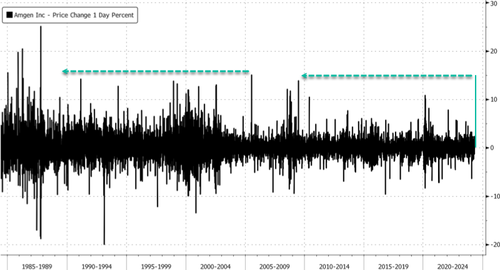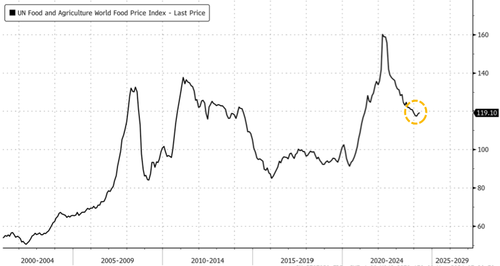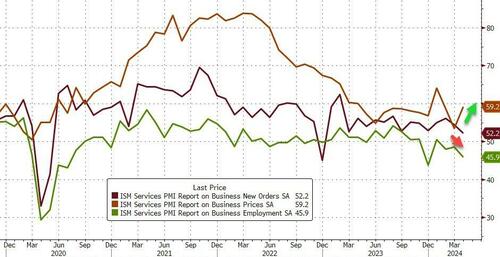The Cold Hard Truth About Renewable Energy Adoption
Authored by Haley Zaremba via oilprice.com,
The future of the global energy sector is caught up in a messy and misleading ideological debate. Depending on which politically informed echo chamber one inevitably finds themself confined to on social media, they are either told that the energy transition is a dangerous myth that will end in economic disaster and permanent rolling blackouts, or that clean energy is going to save the world overnight – as soon as conservatives get out of the way. As usual, the truth lies somewhere in between.
The energy transition is strictly necessary. But it’s going to be very, very hard. It’s damaging to deny that there will almost certainly be shocks, missteps, and setbacks as we undergo one of the most disruptive chapters in industrial history. In large part we’re relying on untested and in many cases as-yet unproven technologies to emerge in the nick of time.
There’s a temptation to sugar-coat the scale of the imperative to make the energy transition more palatable and less daunting. But there’s no denying it – it’s a very uncomfortable, and even frightening, petition to be in. And there will be winners and losers as economic priorities shift – the energy transition is good for humanity as a whole, but it certainly isn’t good for everyone. Acknowledging these difficult truths is essential to properly planning for and managing humanity’s greatest cooperative project.
“There’s a lot of lying to ourselves,” Jason Grumet, the head of the American Clean Power Association (ACP), was quoted by Harvard’s Salata Institute for Climate and Sustainability. “We don’t want to grapple with a very, very tough issue: How do we think about the extent to which some communities have been fundamentally antagonized and disadvantaged, which is absolutely true, and the fact that the world is going to boil if we don’t speed things up?”
The International Monetary Fund (IMF) highlights five major challenges standing between humanity and its ideal clean energy future: the uncertain pace of technological advancement and deployment, disagreement over how fast we can transition without creating major disruption, the balance of future and current energy security, the widening clean energy gap between rich and poor countries, supply chain obstacles for clean energy components.
The pace of transition is a major sticking point. Move too slow and we risk climate catastrophe. Move too fast and risk major systemic log jams, economic hardship, and energy shocks. By transitioning away from coal alone, as the G7 just agreed to do by 2035, one million workers around the world will lose their jobs. The United States alone is home to 1.7 million fossil fuel workers. Without adequate security nets from the government, as well as sufficient time to properly deploy them, the loss of such industries is a looming tragedy for entire communities. The same goes for entire nations who will need to find alternative economic sectors to support their GDP.
In addition to these economic costs, there are considerable logistical barriers to pushing the energy transition through too quickly. Already, the clean energy sector is struggling with huge delays in permitting, major issues securing land rights, and woefully unprepared and aging power grids that have no hope of supporting total electrification in their current state. While clean energy projects charge ahead with funding from initiatives such as the Inflation Reduction Act, major bottlenecks face those projects just down the road. This supports the notion that doing things well takes time. Ironing out those kinks should not be an afterthought.
The same goes for balancing current energy security with future climate security. The global energy crisis that emerged after Russia’s invasion of Ukraine revealed that the world preemptively underinvested in oil and gas, leading to critical energy shortages which plunged communities and countries around the world into energy poverty and even caused food insecurity due to fertilizer shortages among other interrelated shocks.
These vulnerabilities are far more pronounced in developing countries, which are falling far behind in the clean energy transition despite having contributed the least to climate change and standing to lose the most from it. One of the biggest challenges for global decarbonization is the financial support of such nations–but so far wealthy countries have broken their promises to finance the global south’s energy transition.
Finally, as to the last point of the IMF’s five key challenges, there are also major snags in terms of sourcing all the raw materials needed to make the huge amount of clean energy technology components – wind turbines, solar panels, electrical wiring, batteries, and so on – that the energy transition depends on. Already, the sector is marred by geopolitically volatile monopolies and environmentally destructive mining and extraction practices.
Plus, just when we think we’ve got a plan in place for the transition, supply and demand shifts in unpredictable and unprecedented ways. The rapid growth of Artificial Intelligence and data centers, as well as the ever-expanding energy footprint of Bitcoin, have majorly increased global demand for energy. And that demand will continue to grow at a much more rapid pace than clean energy deployment could ever hope to. Making AI a friend of the energy transition instead of a foe will be absolutely essential to the energy transition going forward.
We’re talking about an unprecedented upending of the global industry at a speed that the world has never seen. There’s just no way that every step will be smooth. “Every sector of the economy will have to switch to new technologies, consumers will have to change behaviors, new supply chains will have to be built, and all this has to happen in every major economy, in just a few decades, and at the cost of a whole generation’s savings,” BloombergNEF’s Michael Liebreich wrote in 2023. “What could be harder?”
Well, a business-as-usual scenario would be harder. In a trajectory where the world does not curb its greenhouse gas emissions, climatic conditions would soon become untenable for much of the world, leading to major food shortages and dangerous levels of political unrest, among other crises. Decarbonization is going to be brutal, but a failure to act has resulted in a ‘code red for humanity.’ Ultimately, we can make it easier for ourselves. We should start by being realistic about the challenges we face so we can plan together how to overcome them.
Tyler Durden
Fri, 05/03/2024 – 12:55
via ZeroHedge News https://ift.tt/gmWk25E Tyler Durden

















